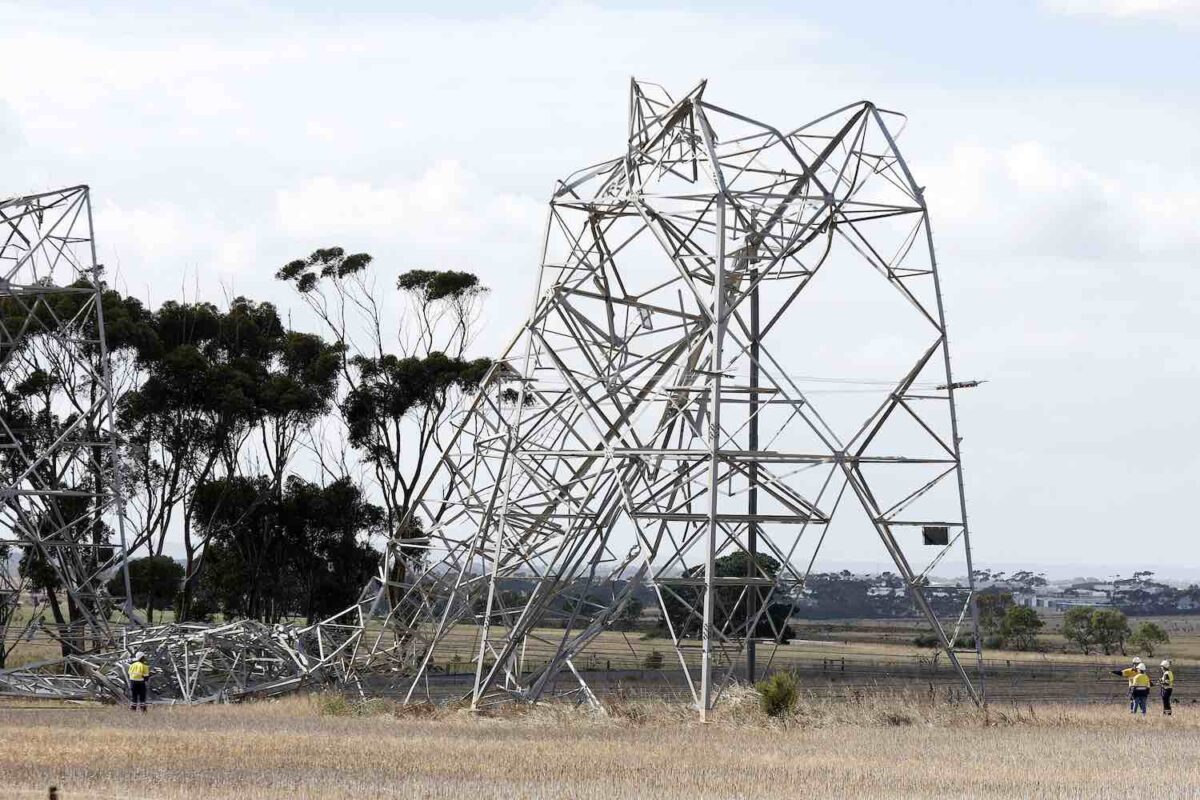Yesterday afternoon, just after 1pm (grid time – AEST) storms damaged power lines across Victoria, taking all four generators at AGL’s massive end-of-life 2,210 megawatt (MW) coal-fired Loy Yang A power station offline as part of a cascading series of events, and with it 30% of the state’s power supply.
This pushed Victorian wholesale prices up to the peak price of $16,600 / megawatt hour (/MWh), up 440 times the $37/MWh price at noon. There can be no more graphic illustration of the volatility, unreliability and price hyperinflation of fossil fuel-derived energy in a system in transition, where coal generators are in terminal decline.
Victorian Energy Minister Lily D’Ambrosio described it as “one of the largest outage events in the state’s history”.
Let’s get real about what is happening here: with climate change escalating, extreme weather events will continue to become more extreme and more frequent. Our power system needs to factor this in as part of sensible adaptation.
Victoria, like Australia, is on notice. We need to plan and build-in energy system resilience as a key priority, and invest in a modern, flexible grid that is future-proofed.
This requires pivoting emphatically and as a matter of urgency from risky dependence on end-of-life, unreliable, polluting centralised coal-plants like Loy Yang A, built four decades ago for a completely different energy market.
Thermal coal power plants are not part of the solution – they are the problem. Hydro and grid transmission takes 5-10 years. But wind, solar and battery storage can be built within 2 years, once approved.
Alongside big solar, wind and batteries, we stand on the precipice of a revolutionary opportunity to massively upscale consumer energy resources, like solar PV on rooftops everywhere, household batteries, and EVs sending power to the grid.
Australia’s world-leading distributed rooftop solar and battery residential systems can be built in a day, or for commercial properties, a month, at speed and scale.
We also need to acknowledge we have a National Electricity Market in Eastern Australia, meaning Victoria can’t effectively go it alone.
We need state and federal cooperation and planning on the development and deployment of utility-scale firmed renewables and transmission, as we are finally seeing under the new Federal Government.
The root of the current problem is the lost decade of energy policy chaos and inaction from the climate luddites of the Coalition. We have known for decades that Loy Yang A would retire this coming decade.
In 2019, then Federal Energy Minister Angus Taylor announced subsidies for 12 shortlisted so-called “High Efficiency Low Emissions” plant proposals to add new capacity to the market. Not a single one of these fantasy plants got to approval and construction.
Thankfully the adults are back in charge and the states and the Federal government are getting on with the job.
The pressure is now on to build firmed replacement capacity ahead of schedule, at speed and scale, as Minister D’Ambrosio is doing, in conjunction with Federal Energy Minister Minister Chris Bowen, leveraging the massive Capacity Investment Scheme announced by the Federal Government at the end of last year, which quadruples investment in firmed renewables.
For example, eighteen months from now, Victoria’s State Electricity Commission will have completed the new Melbourne Renewable Energy Hub near Melton in conjunction with Equis Developments.
It will be the biggest battery in Australia once developed to its full capacity of 1,200MW / 2,400MWh, and one of the largest in the world, capable of powering 200,000 homes.
Yesterday and today, we have a copy book demonstration of the unalterable fact that reliance on massive, centralised end-of-life coal-fired power plants is a too-high-risk fool’s errand and a fundamental strategic weakness.
The grid of the future will be dynamic and distributed, encompassing large-scale wind and solar firmed by massive utility-scale batteries – a smart grid also coordinating and orchestrating millions of rooftop solar systems, batteries in garages and vehicle-to-grid charging across the state and across the country, delivering firmed renewable energy to all Australains – the cheapest, most abundant form of energy.
That is the path forward – decentralised, decarbonised, renewable, resilient and low-price.
Tim Buckley is the director of Climate Energy Finance









